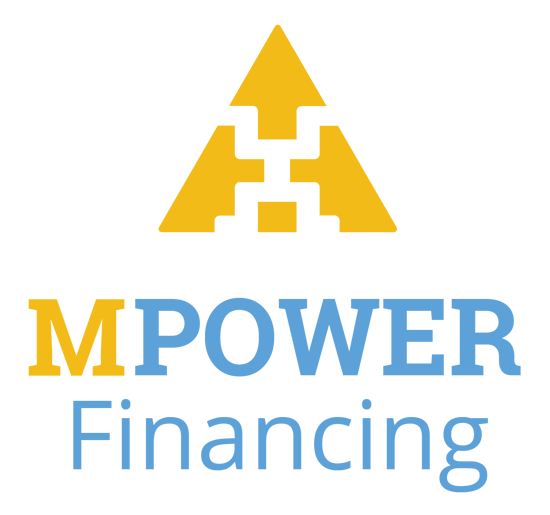How to Get a Student Loan in 2025
Start with federal loans, which involves filling out the FAFSA to see aid and loan opportunities.
Many, or all, of the products featured on this page are from our advertising partners who compensate us when you take certain actions on our website or click to take an action on their website. However, this does not influence our evaluations. Our opinions are our own. Here is a list of our partners and here's how we make money.
It’s common for students to take out loans at some point to pay for college. If you're considering borrowing money to cover school expenses, you can choose between federal or private loans. They have different requirements, benefits and application processes.
We recommend always starting with federal loans. They don't require a credit history, and most don’t need a co-signer. Compared to private loans, federal loans also offer more generous protections for borrowers, such as income-driven repayment and loan forgiveness.
Here's how you can get federal and private student loans.
Student loans from our partners

on College Ave website
College Ave
Best for payment flexibility
5.0
NerdWallet rating
5.0
NerdWallet rating2.89% - 17.99%
Mid-600s
on College Ave website

on Sallie Mae website
Sallie Mae
4.5
NerdWallet rating
4.5
NerdWallet rating2.89% - 17.49%
Mid-600's
on Sallie Mae website

on SoFi® website
SoFi®
5.0
NerdWallet rating
5.0
NerdWallet rating3.43% - 15.99%
Mid-600s
on SoFi® website
Before applying for student loans
If you have the time, do some research into financial aid options before applying for loans. This could save you money in the long run.
1. Submit the FAFSA
Submit a Free Application for Federal Student Aid, or FAFSA, to find out how much financial aid you may qualify for. You might qualify for money that you don’t have to pay back, so always submit your application before taking out any loans. This may include grants, scholarships and work-study.
It takes about 30 minutes to complete the FAFSA. Each school you apply to will use the FAFSA to determine your financial aid; the gap between aid and cost of attendance is what you have to cover.
2. Research other aid options
Before looking at loans, research other financial aid options that don’t require you to pay back the money. These may include private scholarships and grants that aren’t associated with your school.
Some companies and organizations offer scholarships that require you to apply directly with them to be considered for financial assistance.
Some might require you to show financial need, but some award money based on different factors. For example, students can receive scholarships because of their academic performance or involvement in certain activities. We recommend these scholarship websites to help you find a fit.
Look for scholarships that recognize your membership in a community or identity in a group. There are scholarships for students who live in certain locations, have family members that have served in the military, belong to a certain ethnicity or identify as LGBTQ+.
Both types of support are likely to have application deadlines that are earlier than the FAFSA deadline. So begin looking for these types of financial aid as soon as you can.
3. Compare loan types
Federal and private loans differ in many ways, including interest rates, how and when interest accrues and repayment plan options. Understanding the differences between student loan types can help you make a plan to pay for college in the most affordable way for your situation.
» COMPARE: Federal vs. private student loans
How to apply for federal student loans
Start with federal student loans before applying for private student loans.
1. Review your financial aid letter
Your FAFSA is your application for federal financial aid, including loans. Once your college reviews your FAFSA, it will send you an award letter that includes the financial aid types and amounts you qualify for. This can include grants, work-study jobs and federal loans.
An award letter will also include the cost of attendance, which is an estimate of the tuition, fees, and room and board costs for one year of school. This will help you calculate if you need to consider taking out more loans to cover the full cost of college.
Once you understand the awards being offered from institutions, compare costs and financial aid packages from each school to decide which offer to accept. If you’re unsure which type of aid will be better for your situation, call your school’s financial aid office to talk with a counselor.
2. Look for subsidized loans before unsubsidized
There are two types of federal loans: subsidized and unsubsidized.
Subsidized federal loans go to undergraduate students with a financial need. These loans don’t require you to pay the interest on the loan while you’re in school.
Unsubsidized federal loans aren’t based on need, and interest starts to accrue immediately.
To avoid paying extra interest, consider subsidized loans before unsubsidized loans if you qualify for them.
3. Accept financial aid offers
Accept the financial aid that you want, including federal loans. If you decide to take federal student loans, you’ll accept them through your school’s financial aid letter, even though you’re borrowing the money from the Department of Education.
Before you borrow, think ahead to how you’ll repay the debt. Use our student loan calculator to estimate the monthly payments you’ll be making every month for at least 10 years. Borrow only what you need, and don’t take on an amount or interest rate you can’t expect to handle right after graduation.
How to get a private student loan
Federal loans have limits for how much you can borrow, which might leave you with some expenses you still need to pay. Consider private student loans to cover any remaining costs after grants, scholarships, work-study and federal loans. They may be a viable option if you have good credit or a co-signer who does.
1. Gather information for your applications
Getting your information together before starting the application process can save you time. Information you might need when applying for a private student loan includes your:
Birthdate.
Social security number (if you have one).
Current address and potentially previous addresses.
School’s information, degree, enrollment status, course of study and academic year of enrollment.
Request loan amount.
Other financial aid you expect to receive, including scholarships, grants and work-study jobs.
Employment information, such as employer and income.
Banking information, such as bank accounts.
Major monthly bills, including rent or mortgage payments.
What information you have to provide might depend on the lender.
2. Research loan requirements
Most private lenders require you to have good credit (a credit score above 689) and enough income that you can make loan payments while still paying other bills.
If you don't meet the credit and income qualifications, you'll likely need a co-signer who does. If you don't have a co-signer, a few private lenders offer loans for independent students and consider academic performance and earning potential. But you’ll pay more in interest for these types of loans.
» COMPARE: Student loans without a co-signer
2. Compare lenders
Banks, credit unions, state-based agencies and online lenders all offer private student loans. Shop around with multiple lenders, weighing repayment flexibility and forbearance options, as well as the interest rates offered.
Not that while federal undergraduate student loans currently have a fixed interest rate of 6.39%, private student loans may have interest rates that are much higher.
Lenders often have a range of interest rates listed on their websites, but which rate you qualify for depends on several factors. Some lenders let you fill out a form to see which interest rate and terms you’ll qualify for, known as pre-qualifying. This can be more helpful for comparing lenders.
Pre-qualifying for a student loan shouldn’t hurt your credit. Most lenders let you pre-qualify for a student loan by doing a soft credit check, which doesn’t affect your credit score. However, they’ll do a hard credit inquiry, which could affect your credit score, when you officially apply for a loan. Only apply for loans that you know you’ll likely accept to avoid an impact to your credit.
Student loans for parents
Parents looking for loans to pay for their child’s education have federal and private loan options available, each of which requires a credit check. Applying for them is a similar process to how students apply for their own loans. These are the three primary options to consider.
Co-signed private student loans with your child will make you equal borrowers. It’s best if you have good credit, a steady income and are willing to take on the responsibility of paying the debt if your child can’t.
Direct PLUS loans are the only federal student loans that parents can take on behalf of their dependents. You’ll need to submit a FAFSA with your child and complete a parent direct PLUS loan application to borrow.
Note that the federal budget reconciliation agreement that President Trump signed in July 2025 affects how much parents can borrow and repayment options for parent PLUS loans taken after June 30, 2026.
Private college loans for parents are available through certain private lenders to borrow rather than co-signing on a student loan. The debt is your sole responsibility.
Graduate student loans
Graduate student loans include two federal loan options, along with private loans. Students can apply for graduate school loans in a process that’s similar to undergraduate loans but with different limits on how much they can borrow.
Federal direct unsubsidized loans allow graduate students to borrow up to $20,500 each year. To apply, submit your FAFSA. There is no credit check involved.
Federal direct PLUS loans let graduate students borrow up to the cost of attendance minus any other financial aid. Your credit is considered. To apply, submit the FAFSA and complete a graduate student direct PLUS loan application.
Graduate direct PLUS loans end July 1, 2026 for many students. President Trump’s federal budget reconciliation agreement ends the direct PLUS loans program for graduate students. Graduate students can take out direct PLUS loans if they are currently in a graduate program or will begin their graduate program before July 1, 2026. However, these students are limited to borrowing for only three years or the duration of their programs, whichever is shorter.
Private student loans are also available for graduate students. You’ll apply directly with a bank, credit union or online lender, which will consider your credit history to determine the interest rate and repayment terms.
Some private lenders may have specific loans for graduate students depending on their field of study. You typically can borrow up to the cost of attendance minus any other financial aid.
» MORE: Compare graduate loans
Tips for applying for student loans
Know your number. Knowing how much money you’ll need to pay for college gives you a number to focus on. This will likely be calculated in your financial aid letter and can help you avoid borrowing more money than you need. But don’t forget to include expenses like a laptop that might not be included in your financial aid calculations.
Work on improving your credit score. It’s always smart to work on improving your credit, even while in school. And having a better credit score in the future can help you get a lower interest rate or better loan terms with future student loans.
Pay attention to how student loans are changing. The federal government will apply changes to certain student loans starting on July 1, 2026. These changes might affect the types of student loans that you qualify for, how much you can borrow or even which loans are available. If you plan to take out loans after June 30, 2026, be sure to research what will be available and what you’ll qualify for before that date passes.
ON THIS PAGE
ON THIS PAGE














